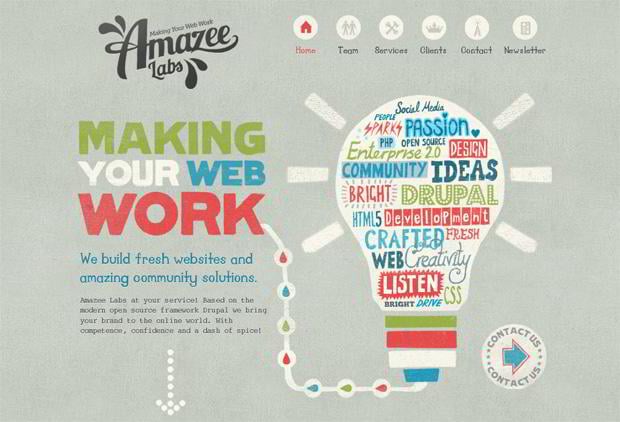Intrigued In Finding Out Exactly How Site Layout Has Evolved? Take A Journey Through The Makeover
Intrigued In Finding Out Exactly How Site Layout Has Evolved? Take A Journey Through The Makeover
Blog Article
Short Article Composed By-Kinney Trolle
In the past, web sites were straightforward and focused on info. Navigating was direct, and layout was for desktops. Currently, user experience is crucial. Data overviews designs for simple navigating. Responsive formats fit various devices. Today, dark setting decreases stress, and minimalist menus enhance navigation. Interactive functions involve users, and vibrant visuals stick out. AI assimilation increases involvement. See just how style has actually developed to enhance your on-line journey.
Very Early Days of Website Design
In the early days of web design, simplicity preponderated. Internet sites were basic, with restricted shades, typefaces, and designs. The focus got on supplying info as opposed to showy visuals. Customers accessed the web via slow-moving dial-up links, so rate and functionality were key.
Navigating food selections were straightforward, typically situated on top or side of the page. mouse click the following internet site were designed for desktop computers, as mobile surfing wasn't yet common. Content was king, and designers focused on very easy readability over complex layout components.
HTML was the key coding language utilized, and designers needed to function within its constraints. Computer animations and interactive attributes were very little compared to today's requirements. Websites were fixed, with little dynamic web content or tailored customer experiences.
Increase of User-Focused Style
With the evolution of web site style, a shift towards user-focused layout concepts has ended up being significantly prominent. Today, producing internet sites that prioritize individual experience is crucial for engaging visitors and attaining business objectives. User-focused design includes understanding the requirements, preferences, and behaviors of your target market to customize the site's layout, content, and includes as necessary.
Designers currently carry out comprehensive study, such as user studies and usability screening, to gather understandings and feedback directly from users. This data-driven approach assists in developing user-friendly navigation, clear calls-to-action, and visually appealing user interfaces that resonate with visitors. By putting the individual at the center of the style process, web sites can deliver a more individualized and pleasurable experience.
Responsive layout has actually likewise become a key facet of user-focused layout, making sure that internet sites are maximized for various devices and screen sizes. This flexibility enhances ease of access and usability, catering to the varied methods individuals interact with web sites today. Basically, the rise of user-focused layout symbolizes a change towards creating electronic experiences that focus on the demands and assumptions of completion customer.
Modern Trends in Website Design
Check out the most up to date patterns forming website design today. One popular trend is dark mode style, providing a sleek and contemporary appearance while lowering eye pressure in low-light settings. An additional key fad is minimal navigating, simplifying menus and enhancing user experience by focusing on essential elements. Incorporating micro-interactions, such as computer animated buttons or scrolling results, can produce a much more engaging and interactive site. Responsive design remains important, guaranteeing smooth individual experiences across various tools. Additionally, making use of vibrant typography and asymmetrical layouts can add aesthetic rate of interest and accentuate specific material.
Incorporating AI innovation, like chatbots for consumer assistance or customized referrals, enhances user interaction and enhances procedures. Accessibility has additionally end up being a considerable fad, with developers prioritizing comprehensive style methods to satisfy diverse user needs. Accepting https://www.forbes.com/sites/forbesagencycouncil/2020/04/24/digital-marketing-matters-now-more-than-ever/ by maximizing internet site efficiency for rate and efficiency is one more emerging pattern in website design. Working together with customer responses and information analytics to repeat and enhance layout continually is vital for staying relevant in the ever-evolving digital landscape. By embracing these modern-day patterns, you can develop a visually attractive, user-friendly internet site that reverberates with your audience.
Final thought
As you reflect on the development of website design from the early days to now, you can see exactly how user-focused design has actually come to be the driving pressure behind modern patterns.
Accept the journey of change and adaptation in web design, constantly keeping the customer experience at the leading edge.
Stay present with the most up to date patterns and innovations, and never stop progressing your approach to produce aesthetically stunning and easy to use sites.
Develop, adjust, and produce - the future of web design remains in your hands.
